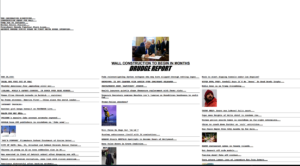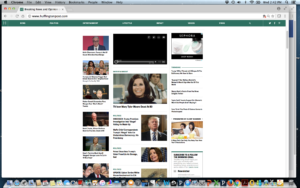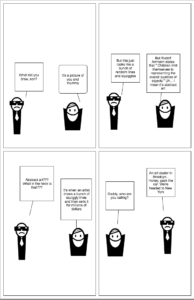
Donald A. Norman’s discussion of tea and teapots in Emotional Design: Why We Love (or Hate) Everyday Things made me reflect on my own love of coffee as a cognitive/emotional enhancer, as well as a daily ritual. The Waffle House coffee mug (pictured above) is by far my most treasured coffee cup for a number of reasons. I only just purchased this mug about a month ago from a Goodwill in Easton, Maryland. Having recently regretted passing up a very good find at this thrift store (R. Kelly’s 2003 club anthem “Ignition (Remix)” on vinyl), I knew I had to purchase this coffee mug from the moment I saw it—and then held it in my hand. Norman argues there are three key aspects of design: the visceral (having to do with aesthetic experience), the behavioral (having to do with the pleasure an object brings and its effectiveness), and the reflective (having to do with the intellectualization and rationalization for owning the object). First of all, I am a rabid fan of Waffle House. I view this mug as an extension of the Waffle House experience, eliciting deep interpersonal ties and a sense of nostalgia. As an aesthetic experience, the mug harkens back to 1950s diners. The mug depicts the steam coming from a cup of coffee in the form of a cosmic spiral, alluding to the 1950’s emphasis on rocketry and all things aeronautical. From a behavioral level, or ergonomically, the mug fits the user’s hand perfectly—like a glove. What you cannot see from the picture is the overall thickness of the mug. From a usability perspective, the mug’s thickness does decrease the volume the cup can hold. In a diner, this size is perfect because the customer can keep asking for refill after refill, providing one satisfying experience after another. At home the mug’s thickness can make using the mug somewhat impractical because the user has to keep getting up for refills. However, the overall feel and the reflective aspects of the mug (as a carrier of overall Waffle House-icity) makes this cup one of my most valued trinkets, something I use almost everyday, leading to a more positive attitude and better overall quality of life.



